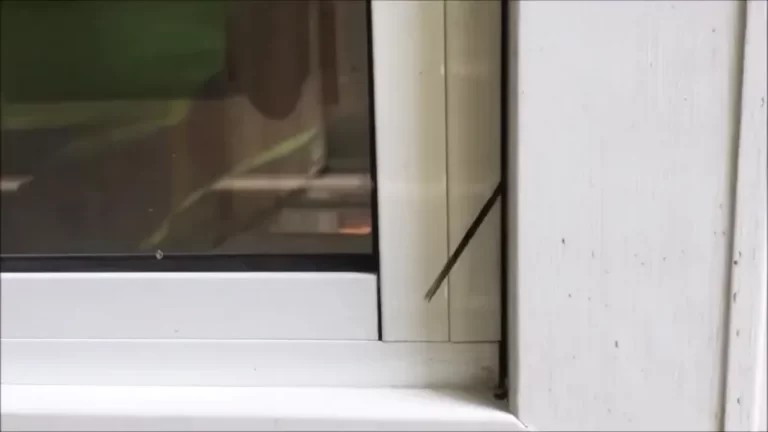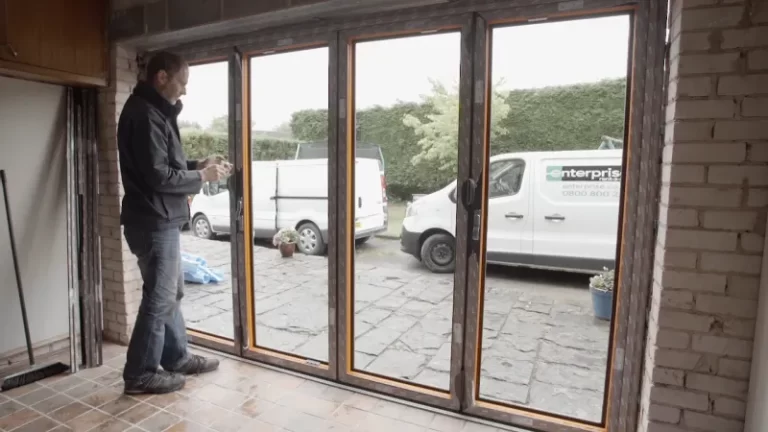How to Cut a Metal Door Threshold?

Proper door threshold installation is crucial for ensuring that your doorway is properly sealed and insulated, as well as for preventing drafts and water damage. In this guide, we will walk you through the steps for cutting a metal door threshold using a variety of tools such as an angle grinder, manual hacksaw, Dremel, or compound miter saw.
We will also discuss the necessary safety precautions and materials needed for the job. By following these instructions, you will be able to accurately and safely cut your metal door threshold, ensuring a proper fit and a professional finish.
You'll Learn About
Safety Precautions
It is important to take safety precautions when cutting a metal door threshold, as the process generates a lot of heat and noise and involves the use of power tools. To protect yourself and others, be sure to follow these safety guidelines:
- Wear protective gear such as safety glasses and gloves to protect your eyes and hands from flying metal chips and debris.
- Follow proper safety guidelines for using power tools. This includes making sure that the tool is properly connected to a power source, unplugging the tool when not in use, and keeping your hands and clothing away from moving parts.
- If you are using an angle grinder, be sure to wear ear protection due to the loud noise generated by the tool.
- Keep a fire extinguisher nearby in case of any accidental fires caused by the heat generated during the cutting process.
- Do not use the power tool if it is damaged or malfunctioning in any way.
By following these safety precautions, you can reduce the risk of injury and ensure a safe and successful cutting process.
Choosing the right tool
There are several tools that you can use to cut a metal door threshold, each with its own advantages and disadvantages. Here is a summary of the different tools you can use, along with their pros and cons:
Angle grinder
An angle grinder is a powerful and versatile tool that is well-suited for cutting metal. It has a spinning disc that can be fitted with a variety of cutting blades, making it suitable for a wide range of materials. However, it can be difficult to make precise cuts with an angle grinder and it generates a lot of heat and noise, so it is important to use it with caution.
Manual hacksaw
A manual hacksaw is a simple and inexpensive tool that can be used to cut metal. It is easy to use and does not require a power source, making it suitable for use in tight spaces or when working outdoors. However, it is a slower and less precise cutting method, and it can be tiring to use for long periods of time.
Dremel with cut-off disc
A Dremel tool is a small, high-speed rotary tool that is well-suited for making detailed cuts in metal. It can be fitted with a cut-off disc, which is a small, thin circular blade that can be used to cut through metal. While a Dremel is a convenient and precise tool, it is not suitable for making large cuts or for cutting through thicker materials.
Compound miter saw with metal blade
A compound miter saw is a power tool that is designed for making precise, angled cuts in wood and other materials. It can be fitted with a metal blade, which makes it suitable for cutting metal. A compound miter saw is an accurate and efficient tool for cutting metal, but it is more expensive and larger than some of the other options.
When choosing the right tool for your project, consider the size of the cut you need to make, the thickness of the material, and your budget.
Comparison Between the Tools
| Tool | Advantages | Disadvantages |
| Angle grinder | Versatile, powerful | Can be difficult to make precise cuts, generates a lot of heat and noise |
| Manual hacksaw | Simple, inexpensive | Slow, less precise, tiring to use for long periods of time |
| Dremel with cut-off disc | Convenient, precise | Not suitable for making large cuts or cutting through thicker materials |
| Compound miter saw with metal blade | Accurate, efficient | More expensive, larger |
Preparing the threshold
Before you begin cutting the metal door threshold, it is important to properly prepare the material and the saw. Here are the steps you should follow:
Measure and mark the cutting line
Use a tape measure and a pencil to measure and mark the length of the cut you need to make. Make sure to double-check your measurements to ensure that the threshold will fit properly in the doorway.
Secure the threshold in the saw
Depending on the tool you are using, there are several ways to secure the threshold in place. If you are using a compound miter saw, you can clamp the threshold down or use a jig to hold it in place. If you are using a Dremel or an angle grinder, you may need to hold the threshold steady with one hand while using the tool with the other.
Adjust the blade to the proper cutting depth
Set the blade depth to match the thickness of the threshold material. If the blade is set too deep, it may cause the saw to bind or the blade to break. If the blade is set too shallow, it will not make a clean cut and may leave a rough edge on the threshold.
By properly preparing the threshold and the saw, you can ensure a smooth and accurate cutting process.
Cutting the threshold
To cut the metal door threshold, follow these steps:
Slowly and carefully make the cut
It is important to work slowly and carefully when cutting metal, as the process generates a lot of heat and noise. Use a steady and even pace to ensure a clean, straight cut. Avoid applying too much pressure on the blade, as this can cause the blade to bend or break.
Avoid overheating the threshold
As you cut, the metal threshold will generate heat. If the threshold becomes too hot, it can weaken or deform. To prevent this, work slowly and take breaks as needed to allow the threshold to cool down.
Use a guide or fence
If you are using a power tool such as a compound miter saw or an angle grinder, it can be helpful to use a guide or fence to ensure a straight and accurate cut. This can be especially useful if you are making a long or complex cut.
By following these steps, you can cut the metal door threshold safely and accurately.
Finishing the cut
After cutting the metal door threshold, there are a few final steps you should take to ensure a smooth and professional finish:
Use a file or sandpaper to smooth out rough edges
Depending on the tool you used to cut the threshold, there may be some rough edges or burrs left behind. Use a file or sandpaper to smooth out these rough edges and create a clean and even finish.
Clean up any metal chips or debris
After cutting the threshold, there may be a significant amount of metal chips and debris left behind. Use a brush or vacuum to clean up these materials, taking care to dispose of them properly.
By completing these final steps, you can ensure that your metal door threshold is ready for installation and will look professional and well-finished.
FAQs
Q: What is the best tool for cutting a metal door threshold?
A: The most effective and accurate tool for cutting a metal door threshold is a compound miter saw with a metal blade. This tool allows for precise cuts and a clean finish. Other options include an angle grinder, manual hacksaw, or Dremel with a cut-off disc, but these tools may not be as precise or efficient as a compound miter saw. No matter what you choose, fitting the door is important.
Q: Can I use a wood blade on a compound miter saw to cut metal?
A: It is not recommended to use a wood blade on a compound miter saw to cut metal. Wood blades are not designed to cut through metal and will likely dull quickly or break during the cutting process. Instead, use a metal blade specifically designed for cutting through metal.
Q: How do I ensure a clean and accurate cut when cutting a metal door threshold?
A: To ensure a clean and accurate cut when cutting a metal door threshold, follow these tips: measure and mark the cutting line carefully, secure the threshold in the saw, adjust the blade to the proper cutting depth, work slowly and carefully to avoid overheating the threshold, and use a guide or fence if needed to ensure a straight cut.
Q: What safety precautions should I take when cutting a metal door threshold?
A: To ensure your safety while cutting a metal door threshold, be sure to wear protective gear such as safety glasses and gloves, follow proper safety guidelines for using power tools, wear ear protection if using an angle grinder, keep a fire extinguisher nearby in case of any accidental fires, and do not use the power tool if it is damaged or malfunctioning. Using the right size nail is very important.
Conclusion
Cutting a metal door threshold is an important step in ensuring proper door installation and preventing drafts, water damage, and other issues. By following the steps outlined in this guide, you can accurately and safely cut your metal door threshold using a variety of tools such as an angle grinder, manual hacksaw, Dremel, or compound miter saw.
Remember to take proper safety precautions when using power tools, including wearing protective gear and following proper safety guidelines. Use a file or sandpaper to smooth out rough edges and clean up any metal chips or debris after cutting.
We hope that this guide has provided you with the information you need to confidently and successfully cut your metal door threshold. Always remember to follow proper safety guidelines when using power tools to ensure a safe and successful project.



